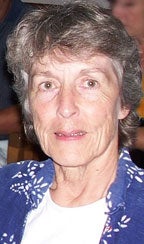
Email: mkjackes@uwaterloo.ca
Background
Mary Jackes’ major interest is in the methods of bioarchaeology. She has done research in Algeria, Australia, Canada, China, France, Italy, Kenya, Portugal, Spain and Tanzania.
Following two degrees in social anthropology in Australia, she took a diploma in physical anthropology at Cambridge University and worked for the BM(NH) Catalogue of Fossil Primates. She then went to the University of Toronto to do a PhD, but interrupted her degree to work for several years at Olduvai and Laetoli. Deciding that the reconstruction of prehistoric life through bioarchaeology would be more challenging than palaeontology, she returned to Toronto and completed her thesis on a Huron ossuary. She was hired by the Royal Ontario Museum to study the Neutral Nation burial complex at Grimsby and this was followed by a short break working for the South Australia Museum. She then began a long-term collaboration with David Lubell on projects in Algeria and Portugal, concentrating on human osteology but also working with faunal material. Most recently, she has focussed on palaeodemography with a special interest in adult age estimation, the representativeness of samples and the use of known-age skeletons. This has involved reconstruction of sites in both Algeria and Portugal that were dug in the 19th and early 20th centuries, as well as their post-excavation history (essential for an understanding of the limitations of samples), and working on the mortuary archaeology of Holocene sites in Algeria and Portugal. The integrity of buried bone and problems arising from early AMS dating and stable isotope analyses have also been an interest.
The large numbers of loose teeth found in some caves has led to a particular interest in teeth and their value in estimating a minimum number of individuals, expanded beyond the normal MNI derived from bones. This has included collaboration on a reconstruction of dental data from a late 18th early 19th century graveyard in Zwolle, The Netherlands, and a new analysis of the teeth. Her current project is a small Neolithic burial cave at Roquemissou (Averyron, France).